Delta 8 Flower Potency Guide: Understanding THC Percentages
The world of delta 8 flower potency can seem complex at first glance, but understanding the fundamentals will help you make informed decisions about your cannabis consumption. Delta-8-tetrahydrocannabinol (Delta-8 THC) has gained significant attention as a milder alternative to traditional Delta-9 THC, offering users a more controlled and manageable psychoactive experience.
Unlike traditional cannabis flower that occurs naturally with varying levels of Delta-9 THC, Delta 8 flower is typically hemp-derived CBD flower that has been infused or coated with Delta-8 THC distillate. This manufacturing process allows for more precise control over potency levels, making it easier for consumers to find products that match their desired effects and tolerance levels.
When we talk about delta 8 thc percentage, we're referring to the concentration of Delta-8 THC present in the flower by weight. This percentage is the primary indicator of how strong the product will be and what kind of effects you can expect. Understanding these percentages is essential for dosing properly and avoiding unwanted experiences.
The appeal of Delta 8 flower lies in its unique properties. Users often describe the effects as providing a clear-headed high with less anxiety and paranoia compared to Delta-9 THC. This makes understanding potency even more important, as the goal is often to achieve specific therapeutic or recreational effects without overwhelming psychoactivity.
For consumers new to Delta 8, the potency landscape can be confusing. Products range from low-potency options suitable for beginners to high-strength varieties designed for experienced users. The key is understanding how these percentages translate to real-world effects and finding the right balance for your individual needs and preferences.
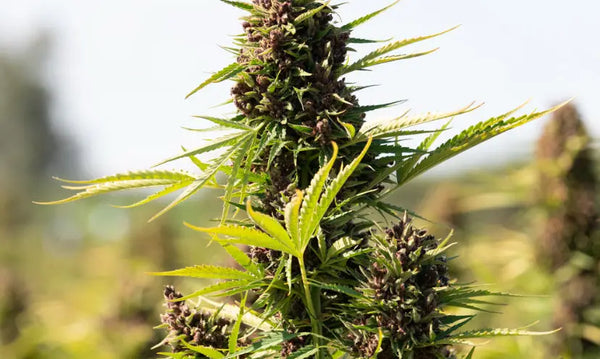
How Delta 8 Percentages Are Measured
Understanding how delta 8 flower strength is measured requires a basic knowledge of laboratory testing procedures and cannabinoid analysis. The process begins with sample preparation, where representative portions of the flower are collected and prepared for analysis using standardized protocols.
The most common method for measuring cannabinoid content is High-Performance Liquid Chromatography (HPLC), though some laboratories also use Gas Chromatography-Mass Spectrometry (GC-MS). HPLC is preferred for Delta 8 analysis because it doesn't require heating the sample, which can convert cannabinoids and potentially skew results. This method provides accurate measurements of individual cannabinoids, including Delta-8 THC, Delta-9 THC, CBD, CBG, and other compounds.
The testing process involves dissolving flower samples in specific solvents to extract cannabinoids, then analyzing these extracts using sophisticated equipment. The results are typically expressed as percentages by dry weight, meaning the percentage represents how much of the flower's weight consists of the specific cannabinoid when all moisture is removed.
One crucial aspect of Delta 8 testing is the distinction between "total" and "active" cannabinoid content. Some cannabinoids exist in their acid forms (like THCA) and convert to their active forms (like THC) when heated. However, since Delta 8 flower is typically infused with already-activated Delta-8 THC distillate, this conversion factor is less relevant than with traditional cannabis flower.
Laboratory results will show not just the delta 8 thc content, but also other cannabinoids present in the flower. This full cannabinoid profile is important because these compounds work together through what's known as the "entourage effect," potentially influencing the overall experience and effectiveness of the product.
Quality laboratories will also test for consistency across different batches of the same product. This batch-to-batch testing ensures that when you purchase a product labeled as having a specific potency, you can expect similar results each time. Reputable manufacturers will provide Certificates of Analysis (COAs) that detail these test results for each batch.
Typical Potency Ranges for Delta 8 Flower
The market for high potency delta 8 flower offers a wide spectrum of strength levels to accommodate different user preferences and experience levels. Understanding these ranges helps consumers make informed choices about which products might be most suitable for their needs.
Low Potency Range (5-15% Delta-8 THC)
Products in this range are typically recommended for beginners or those seeking mild effects. A 10% Delta-8 THC flower contains approximately 100mg of Delta-8 THC per gram of flower. This concentration provides gentle effects that are manageable for most users, making it an excellent starting point for those new to Delta 8 or cannabis in general.
Users in this potency range often report mild relaxation, subtle mood enhancement, and gentle stress relief without overwhelming psychoactive effects. This range is also suitable for daytime use or for individuals who need to remain functional while experiencing the therapeutic benefits of Delta 8.
Medium Potency Range (15-25% Delta-8 THC)
This middle ground represents the most popular category among regular Delta 8 users. Products with delta 8 flower mg concentrations in this range offer more pronounced effects while remaining manageable for most experienced users. A 20% Delta-8 THC flower contains approximately 200mg of Delta-8 THC per gram.
Users typically experience more noticeable relaxation, enhanced mood, and clearer psychoactive effects. This potency range is often preferred for evening use or when users want to experience more significant therapeutic benefits such as pain relief, improved sleep quality, or appetite stimulation.
High Potency Range (25-40% Delta-8 THC)
Strong delta 8 flower in this category is designed for experienced users who have developed tolerance or who require higher concentrations for therapeutic purposes. Products with 30% Delta-8 THC contain approximately 300mg per gram, delivering potent effects that can be overwhelming for inexperienced users.
This range provides significant psychoactive effects, substantial therapeutic benefits, and longer-lasting experiences. Users should approach these products with caution and start with smaller amounts than they might use with lower-potency products. The effects are typically more sedating and are best reserved for evening use or times when impairment is acceptable.
Ultra-High Potency Range (40%+ Delta-8 THC)
The highest potency products available represent the extreme end of the Delta 8 flower spectrum. These products are typically created through advanced infusion techniques and multiple applications of Delta-8 THC distillate. While rare, some products can reach 50% or higher Delta-8 THC concentrations.
These ultra-high potency products are generally recommended only for users with significant tolerance or specific medical needs requiring high cannabinoid doses. The effects can be very intense and long-lasting, making careful dosing and timing essential for a positive experience.
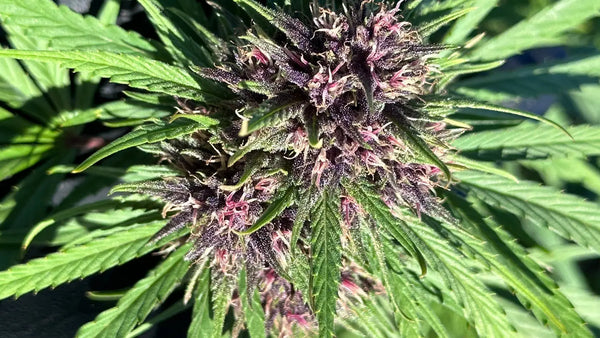
Factors Affecting Potency and Consistency
Several factors influence delta 8 potency levels and the consistency of these levels across different products and batches. Understanding these variables helps consumers make better purchasing decisions and set appropriate expectations for their Delta 8 flower experience.
Manufacturing Methods and Infusion Techniques
The method used to infuse CBD flower with Delta-8 THC significantly impacts both potency and consistency. Spray-on methods involve applying Delta-8 THC distillate dissolved in solvents directly onto the flower surface. While this method can achieve high potency levels quickly, it may result in uneven distribution and inconsistent effects within the same batch.
Dip or coating methods involve immersing the flower in Delta-8 THC solutions, allowing for more even distribution but potentially affecting the flower's texture and appearance. Some manufacturers use multiple coating sessions to build up potency levels gradually, which can improve consistency but increases production costs.
More advanced manufacturers use vacuum infusion or other specialized techniques to drive Delta-8 THC deeper into the flower structure. These methods typically produce more consistent potency distribution and a more natural feel and appearance, though they require sophisticated equipment and expertise.
Base Flower Quality and Characteristics
The quality and characteristics of the hemp flower used as the base material significantly affect the final product's potency and consistency. Dense, resinous flowers tend to hold infused cannabinoids better than loose, dry flowers. The natural terpene profile of the base flower can also influence how well Delta-8 THC adheres and distributes throughout the material.
Moisture content plays a crucial role in infusion success. Flowers that are too dry may not absorb Delta-8 THC solutions effectively, while overly moist flowers can dilute the final potency and create stability issues. Quality manufacturers carefully control moisture levels to optimize infusion results.
The size and structure of flower pieces also matter. Smaller, more uniform pieces tend to provide more consistent delta 8 flower concentration because they expose more surface area to the infusion process. However, many consumers prefer larger, more visually appealing buds, creating a balance challenge for manufacturers.
Storage and Environmental Factors
Proper storage significantly affects potency retention over time. Delta-8 THC can degrade when exposed to light, heat, oxygen, and moisture. Products stored in improper conditions may show significant potency loss within weeks or months of production.
Temperature fluctuations can cause Delta-8 THC to migrate within the flower, potentially creating hot spots with high concentrations and other areas with little to no active compounds. This migration effect is particularly problematic for products stored in warm environments or shipped during hot weather.
Humidity levels also impact potency consistency. High humidity can cause clumping and uneven distribution of infused cannabinoids, while low humidity can make the flower brittle and cause cannabinoid-rich surface material to fall off as powder or shake.
Quality Control and Testing Protocols
Manufacturers' commitment to quality control directly impacts potency consistency. Companies that test only single samples from large batches may miss significant variations within that batch. More thorough manufacturers test multiple samples from different areas of each batch to ensure consistent potency throughout.
The frequency of testing also matters. Some manufacturers test every batch, while others may test only periodically or when changing suppliers or processes. Regular testing helps identify and correct issues that could affect potency or consistency.
Third-party laboratory testing provides additional assurance of accuracy and consistency. Independent labs have no financial incentive to report favorable results, making their findings more trustworthy. However, the quality and accreditation of these laboratories also varies significantly.
Reading and Interpreting Lab Results
Understanding how to read and interpret Certificates of Analysis (COAs) is essential for consumers who want to make informed decisions about delta 8 flower dosage and product selection. These documents provide detailed information about cannabinoid content, potency, and safety testing results.
Certificate of Analysis Components
A comprehensive COA typically includes several sections covering different aspects of product quality and safety. The cannabinoid profile section shows the concentration of various cannabinoids present in the sample, typically expressed as percentages by dry weight. For Delta 8 flower, you'll primarily be interested in the Delta-8 THC content, but other cannabinoids like CBD, CBG, and Delta-9 THC (which should be below 0.3% for legal compliance) are also important.
The testing methodology section describes which analytical methods were used and may include information about the equipment and procedures employed. HPLC results are generally considered more accurate for Delta 8 analysis than GC-MS results, as mentioned earlier.
Sample information includes details about when and how the sample was collected, when testing was performed, and which specific batch or lot the results represent. This information helps you verify that the COA corresponds to the product you're purchasing and understand how recent the testing is.
Understanding Cannabinoid Profiles
Beyond just Delta-8 THC content, the full cannabinoid profile provides valuable information about the product's potential effects and quality. High-quality Delta 8 flower should show detectable levels of minor cannabinoids and terpenes that contribute to the entourage effect.
The presence of Delta-9 THC is particularly important for legal compliance. Hemp-derived products must contain less than 0.3% Delta-9 THC to remain federally legal in the United States. Some Delta 8 products may show trace amounts of Delta-9 THC due to the conversion process or starting materials, but these levels should remain well below the legal limit.
CBD content can vary significantly in Delta 8 flower products. Some manufacturers use high-CBD hemp flower as their base, resulting in products with substantial CBD content alongside the Delta-8 THC. Others may use hemp flower with minimal CBD content to maximize the proportion of Delta-8 THC.
Identifying Quality Indicators
Several factors in lab results can indicate product quality beyond just potency levels. Consistent results across multiple tests of the same batch suggest good manufacturing controls and quality assurance procedures. Significant variation in results may indicate poor mixing, uneven infusion, or other quality control issues.
The presence of residual solvents testing is important for infused products like Delta 8 flower. The infusion process often involves solvents that should be removed before the final product reaches consumers. Quality manufacturers will test for and report residual solvent levels, ensuring they meet safety standards.
Heavy metals testing checks for contamination with substances like lead, cadmium, mercury, and arsenic. While less common in flower products than in concentrates, heavy metals can accumulate in hemp plants grown in contaminated soil or processed with contaminated equipment.
Microbial and Pesticide Testing
Comprehensive COAs should include testing for microbial contaminants such as bacteria, yeast, mold, and specific pathogens like E. coli and Salmonella. These contaminants can pose serious health risks, particularly for immunocompromised individuals.
Pesticide testing screens for agricultural chemicals that may have been used during hemp cultivation. Organic or pesticide-free growing practices should result in non-detect levels for most or all pesticides tested. High pesticide levels can indicate poor agricultural practices or contamination during processing.
The specific pesticides tested for should include those commonly used in hemp cultivation as well as those with the highest health risks. More comprehensive testing panels that screen for hundreds of different compounds provide better assurance of product safety.
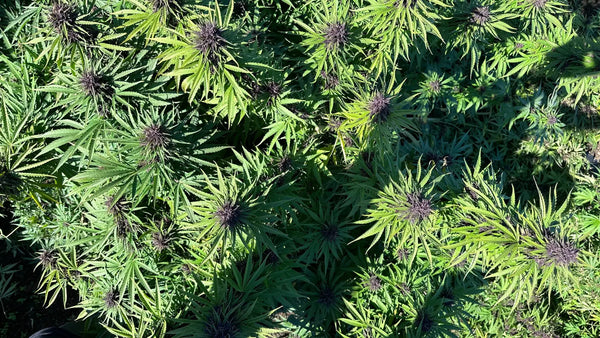
Potency vs. Effects Relationship
The relationship between delta 8 flower potency and actual effects experienced by users is complex and influenced by numerous factors beyond just the percentage of Delta-8 THC present in the product. Understanding this relationship helps consumers set realistic expectations and choose appropriate products for their desired outcomes.
Dose-Response Characteristics
Delta-8 THC exhibits what researchers call a "bell curve" dose-response relationship for many of its effects. This means that increasing the dose initially increases the desired effects, but beyond a certain point, further increases may actually diminish some benefits or introduce unwanted side effects.
For example, low to moderate doses of Delta-8 THC typically produce relaxation and mild euphoria. However, very high doses may lead to sedation, anxiety, or cognitive impairment that many users find unpleasant. This characteristic makes understanding your optimal dose range more important than simply seeking the highest potency available.
Individual tolerance plays a significant role in this dose-response relationship. Regular users often require higher potencies to achieve the same effects that newcomers experience with much lower concentrations. However, tolerance can be managed through periodic breaks or by rotating between different cannabinoid products.
Bioavailability and Consumption Methods
The potency listed on Delta 8 flower products represents the total Delta-8 THC content, but not all of this content will be absorbed and utilized by your body. When smoking or vaping Delta 8 flower, bioavailability typically ranges from 15-30%, meaning that only a fraction of the total Delta-8 THC reaches your bloodstream.
Combustion temperature affects how much Delta-8 THC is actually delivered. Smoking at very high temperatures may destroy some cannabinoids, while temperatures that are too low may not effectively vaporize them. Vaporizing at optimal temperatures (typically 350-400°F for Delta-8 THC) generally provides more consistent and efficient cannabinoid delivery than smoking.
The rate of consumption also influences effects. Taking small puffs spaced over time allows you to gauge effects and adjust your dose accordingly. This approach is particularly important with high potency delta 8 flower, where the difference between an optimal dose and too much can be relatively small.
Individual Factors Affecting Response
Body weight and metabolism significantly influence how potency translates to effects. Individuals with higher body weight or faster metabolisms may require higher potencies to achieve the same effects as smaller individuals or those with slower metabolisms. However, these factors don't affect everyone uniformly, and personal experimentation is often necessary to find optimal doses.
Previous cannabis experience also plays a role. Individuals with extensive Delta-9 THC experience may find that their tolerance partially extends to Delta-8 THC, though the cross-tolerance is not complete. Conversely, individuals new to all cannabis products should start with lower potencies regardless of their body size or metabolism.
Genetic factors influence cannabinoid metabolism and receptor sensitivity. Some individuals naturally process cannabinoids more quickly or slowly than others, affecting both the intensity and duration of effects. These genetic differences help explain why some people seem naturally more or less sensitive to cannabis products.
Entourage Effect and Full-Spectrum Benefits
The presence of other cannabinoids and terpenes in Delta 8 flower can significantly influence effects beyond what Delta-8 THC potency alone would predict. This "entourage effect" means that two products with identical delta 8 thc percentage levels may produce noticeably different experiences.
Terpenes, the aromatic compounds found in cannabis and many other plants, can modulate cannabinoid effects. For example, myrcene is associated with sedating effects, while limonene may provide mood elevation. The terpene profile of the base hemp flower used in Delta 8 products contributes to the overall experience.
Minor cannabinoids like CBG, CBN, and CBC also contribute to the entourage effect. Even small amounts of these compounds can influence the overall experience, sometimes making lower-potency products with rich minor cannabinoid profiles more effective than higher-potency products with isolated Delta-8 THC.
Time-Dependent Effects
The relationship between potency and effects changes over the duration of the experience. Initial effects from smoking or vaping Delta 8 flower typically begin within minutes and peak around 30-60 minutes after consumption. However, higher potency products may have longer-lasting effects, extending the experience well beyond the initial peak.
This time-dependent relationship is important for dosing decisions. Users who re-dose too quickly, before the full effects of their initial dose have developed, may end up consuming more than intended. This is particularly relevant with strong delta 8 flower products where the effects may continue building for an hour or more.
Understanding your personal timeline for effects helps with both dosing decisions and planning activities around Delta 8 consumption. Some individuals experience effects very quickly, while others may take longer to feel the full impact of a given dose.
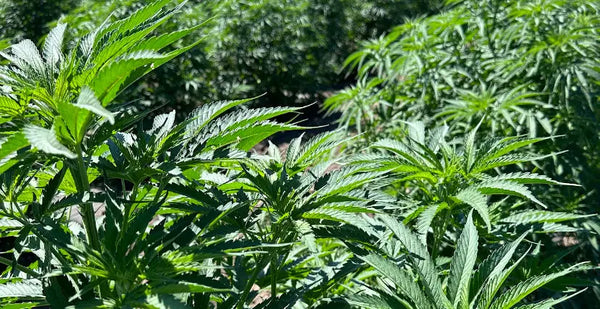
Dosage Guidelines and Safety Considerations
Proper dosing is crucial when working with delta 8 flower concentration products, especially as potencies continue to increase in the marketplace. Understanding how to calculate appropriate doses and recognize your limits helps ensure safe and enjoyable experiences while minimizing the risk of adverse effects.
Starting Dose Recommendations
For individuals new to Delta 8 flower, the standard recommendation is to "start low and go slow." This approach is particularly important given the delayed onset and potentially long-lasting effects of cannabinoids. A typical starting dose for beginners is equivalent to 2.5-5mg of Delta-8 THC, which translates to a very small amount of flower depending on the product's potency.
To calculate your dose from flower potency, use this simple formula: (Percentage × 1000) ÷ Weight in grams = mg per gram. For example, a 20% Delta-8 THC flower contains 200mg of Delta-8 THC per gram. A small puff or pinch representing about 0.025 grams would deliver approximately 5mg of Delta-8 THC, assuming perfect efficiency.
Experienced cannabis users may start with slightly higher doses, typically in the 5-10mg range, but should still exercise caution as Delta-8 THC effects can differ from Delta-9 THC experiences. The goal is to find the minimum effective dose that provides desired effects without unwanted side effects.
Scaling Up Safely
Once you've established a baseline tolerance with lower doses, increases should be gradual and systematic. A common approach is to increase doses by 25-50% each time, waiting at least 2-3 sessions between increases to fully assess the effects of each dose level.
Keep detailed notes about your experiences, including the amount consumed, time of consumption, onset time, peak effects, duration, and any side effects. This information helps identify patterns and optimal dosing strategies for different situations or desired outcomes.
Consider your consumption method when scaling doses. Smoking or vaping allows for more precise dose control since effects begin quickly and you can stop when desired effects are reached. However, this also makes it easier to accidentally consume too much if you're not paying attention to your intake.
Recognizing Overconsumption
Understanding the signs of Delta-8 THC overconsumption helps you respond appropriately if you or someone else takes too much. Common symptoms include anxiety, paranoia, rapid heart rate, dizziness, nausea, and extreme sedation. While Delta-8 THC is generally considered safer than Delta-9 THC, overconsumption can still be uncomfortable and potentially dangerous.
If overconsumption occurs, the most important steps are to remain calm, move to a safe and comfortable environment, and wait for the effects to subside. Unlike some other substances, there's no way to "sober up" quickly from cannabinoids, so patience and supportive care are the primary interventions.
Having a trusted friend present when trying new products or higher doses can provide reassurance and assistance if needed. This is particularly important when experimenting with delta 8 flower mg levels significantly higher than your usual consumption.
Special Populations and Considerations
Certain groups require special consideration when using Delta 8 products. Older adults may be more sensitive to cannabinoid effects and should start with even lower doses than typically recommended. Age-related changes in metabolism and increased likelihood of medication interactions require extra caution.
Individuals taking medications should consult with healthcare providers before using Delta 8 products. Cannabinoids can interact with various medications, particularly those metabolized by the same liver enzymes. Blood thinners, seizure medications, and heart medications are among those with potential interactions.
Pregnant and breastfeeding individuals should avoid Delta 8 products entirely, as there is insufficient research on the safety of cannabinoids during these periods. The potential risks to fetal and infant development are not well understood, making avoidance the safest approach.
Medical Considerations and Contraindications
Individuals with certain medical conditions should exercise additional caution or avoid Delta 8 products altogether. Those with cardiovascular conditions should be particularly careful, as cannabinoids can affect heart rate and blood pressure. Starting with very low doses and monitoring for cardiovascular symptoms is essential.
Mental health conditions, particularly anxiety disorders, bipolar disorder, and schizophrenia, can be exacerbated by cannabinoid use. While some individuals find Delta 8 helpful for anxiety, others may experience increased symptoms. Close monitoring and potentially professional supervision may be appropriate.
Respiratory conditions may be worsened by smoking Delta 8 flower. Individuals with asthma, COPD, or other breathing problems should consider alternative consumption methods or avoid inhalation products entirely.
Choosing the Right Potency Level
Selecting the appropriate delta 8 potency levels requires careful consideration of multiple factors including your experience level, intended use, tolerance, and personal goals. This decision-making process is crucial for ensuring a positive experience and achieving desired outcomes while minimizing risks.
Assessing Your Experience Level
Your background with cannabis products is one of the most important factors in choosing appropriate potency levels. Complete beginners should start with the lowest potency products available, typically in the 5-10% Delta-8 THC range. This allows you to understand how your body responds to Delta 8 without overwhelming effects.
Individuals with some cannabis experience but new to Delta 8 should still start conservatively, perhaps in the 10-15% range. While there may be some cross-tolerance between Delta-9 and Delta-8 THC, the effects profiles are different enough that your Delta-9 tolerance may not fully predict your Delta-8 response.
Experienced cannabis users with established tolerance may start with medium potency products (15-25% Delta-8 THC) but should still approach with caution. Even experienced users benefit from understanding how Delta 8 affects them specifically before moving to higher potency products.
Defining Your Goals and Intended Use
The intended use for your Delta 8 flower significantly influences optimal potency selection. For daytime use when you need to remain functional and alert, lower potency products are generally more appropriate. These allow you to experience mild therapeutic benefits without significant impairment.
Evening or recreational use may accommodate higher potency products, particularly if relaxation and stress relief are primary goals. However, even for evening use, starting with moderate potencies helps you avoid overconsumption that could interfere with sleep quality or next-day functioning.
Therapeutic use for specific conditions may require experimenting with different potency levels to find what provides optimal symptom relief. Some conditions respond well to low, consistent doses (micro-dosing approach), while others may require higher potencies for adequate symptom management.
Considering Frequency of Use
Your intended frequency of use should influence potency selection. Daily users often benefit from lower to moderate potency products that allow for consistent use without rapidly building tolerance. This approach supports sustainable long-term use patterns.
Occasional users may prefer higher potency products since they're not concerned about tolerance buildup and may want more pronounced effects from infrequent use sessions. However, irregular users should be especially cautious with high potency products since they haven't maintained tolerance levels.
Tolerance management strategies may involve rotating between different potency levels or taking periodic breaks to reset sensitivity. Planning your potency selections around these strategies helps maintain effectiveness over time.
Lifestyle and Responsibility Factors
Your daily responsibilities and lifestyle constraints significantly impact appropriate potency choices. Individuals with demanding jobs, caregiving responsibilities, or safety-sensitive activities need to be particularly careful about potency levels and timing of use.
Transportation considerations are crucial since impairment from cannabis products can affect driving ability for hours after consumption. Higher potency products typically produce longer-lasting impairment, affecting when it's safe to drive or operate machinery.
Social and family considerations may also influence potency choices. Products that produce obvious impairment or strong odors may not be suitable for all living situations or social contexts.
Budget and Value Considerations
Higher potency products typically cost more per unit but may offer better value for experienced users who require higher doses for desired effects. However, the relationship between price and potency isn't always linear, and other factors like product quality and consistency also affect value.
Lower potency products may actually provide better value for beginners and occasional users who don't need high concentrations to achieve desired effects. Starting with expensive, high-potency products that exceed your needs wastes money and increases the risk of negative experiences.
Consider the long-term costs of different potency strategies. Products that allow for sustainable use patterns without rapid tolerance buildup may provide better long-term value than initially cheaper products that require frequent dose escalations.
Frequently Asked Questions
What's the difference between Delta 8 flower potency and regular cannabis potency?
Delta 8 flower potency refers specifically to the concentration of Delta-8 THC, while regular cannabis potency typically refers to Delta-9 THC content. Delta-8 THC is generally considered about 60-70% as potent as Delta-9 THC in terms of psychoactive effects, meaning a 20% Delta 8 flower might feel similar to a 12-14% Delta-9 THC flower. However, the effects profiles are different, with Delta 8 typically producing less anxiety and a clearer-headed experience.
How do I convert Delta 8 flower percentage to actual milligrams?
To calculate the Delta-8 THC content in milligrams, multiply the percentage by 10 to get mg per gram. For example, 15% Delta-8 THC flower contains 150mg of Delta-8 THC per gram. If you consume 0.1 grams (100mg of flower), you're getting approximately 15mg of Delta-8 THC. Remember that not all of this will be absorbed due to combustion losses and bioavailability factors.
Is higher potency always better for Delta 8 flower?
Higher potency isn't necessarily better and can actually be counterproductive for many users. High potency delta 8 flower increases the risk of overconsumption and unwanted side effects. The optimal potency is the lowest concentration that provides your desired effects. Many users find that moderate potency products (15-25%) offer the best balance of effectiveness and manageability.
How long do effects from different potency levels last?
Effect duration generally increases with potency level, but individual factors play a significant role. Low potency Delta 8 flower (5-15%) typically produces effects lasting 1-3 hours when smoked or vaped. Medium potency products (15-25%) may last 2-4 hours, while high potency varieties (25%+) can produce effects lasting 4-6 hours or longer. Edible forms of Delta 8 last significantly longer than smokable flower regardless of potency.
Can Delta 8 flower potency vary within the same batch?
Yes, potency can vary within batches, especially with products that use spray-on or coating infusion methods. This is why quality manufacturers test multiple samples from each batch and use more advanced infusion techniques to ensure consistency. Look for products with certificates of analysis showing testing from multiple sample points, and choose manufacturers known for consistent delta 8 flower concentration across their batches.
What should I do if a high potency product is too strong?
If you find a strong delta 8 flower product too potent, you can reduce your dose by consuming smaller amounts, mixing it with CBD flower to dilute the potency, or taking longer breaks between use sessions. You might also consider switching to a lower potency product that better matches your tolerance and desired effects. Always wait for current effects to fully subside before consuming more.
How do I read lab results to understand actual potency?
Look for the Delta-8 THC percentage in the cannabinoid profile section of the Certificate of Analysis (COA). This should be clearly labeled and expressed as a percentage by dry weight. Also check the testing date to ensure results are recent, verify the batch number matches your product, and look for additional information about other cannabinoids that might influence effects. Reputable labs will also show their testing methodology and equipment used.
Does Delta 8 flower potency affect how much I should consume?
Absolutely. Higher potency products require smaller amounts to achieve the same effects as lower potency products. For example, if you typically use 0.2 grams of 15% delta 8 thc content flower, you would need only about 0.1 grams of a 30% product for similar effects. Always adjust your consumption amount based on the potency of the specific product you're using.
Conclusion: Making Informed Potency Decisions
Understanding delta 8 flower dosage and potency is essential for safe, effective, and enjoyable cannabis experiences. The key principles to remember are starting with low potencies, understanding your personal response patterns, and choosing products appropriate for your experience level and intended use.
The Delta 8 market offers an unprecedented range of potency options, from gentle 5% products suitable for beginners to ultra-high 40%+ concentrations designed for experienced users with high tolerance. This variety is beneficial, but it also requires consumers to be educated and thoughtful in their product selections.
Quality and consistency matter as much as potency levels. A well-made 15% Delta 8 flower with consistent potency throughout the batch and comprehensive lab testing often provides a better experience than a poorly made 30% product with uneven distribution and questionable quality control.
Remember that potency is just one factor in the overall Delta 8 experience. The entourage effect from other cannabinoids and terpenes, your individual physiology, consumption method, and environmental factors all play important roles in determining effects. Focus on finding products that consistently deliver the experience you're seeking rather than simply chasing higher numbers.
As the Delta 8 market continues to evolve, we can expect to see improvements in manufacturing consistency, more detailed lab testing, and better consumer education. Stay informed about new developments, continue learning about your personal responses to different products, and always prioritize safety over intensity when making potency decisions.
The goal is to find your optimal delta 8 flower potency sweet spot – the concentration that provides desired effects while minimizing risks and side effects. This sweet spot will be unique to each individual and may change over time as tolerance, health status, and goals evolve. Regular reassessment of your potency needs ensures continued positive experiences and therapeutic benefits.
By following the guidelines and principles outlined in this comprehensive guide, you'll be well-equipped to navigate the diverse world of Delta 8 flower potencies safely and effectively. Whether you're seeking mild therapeutic benefits, recreational enjoyment, or targeted symptom relief, understanding potency helps you make informed decisions that enhance your overall cannabis experience while prioritizing safety and responsible use.

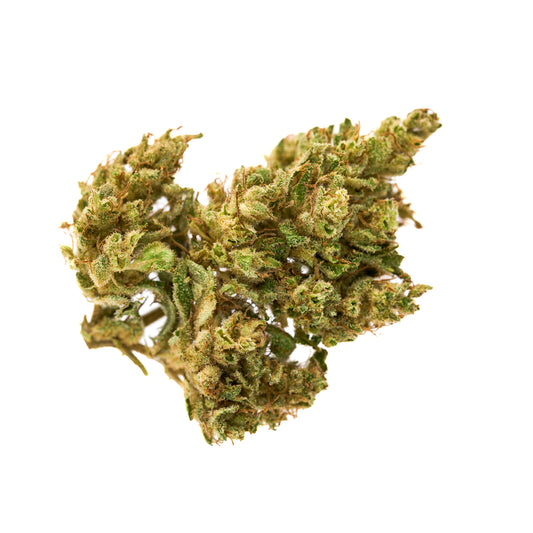
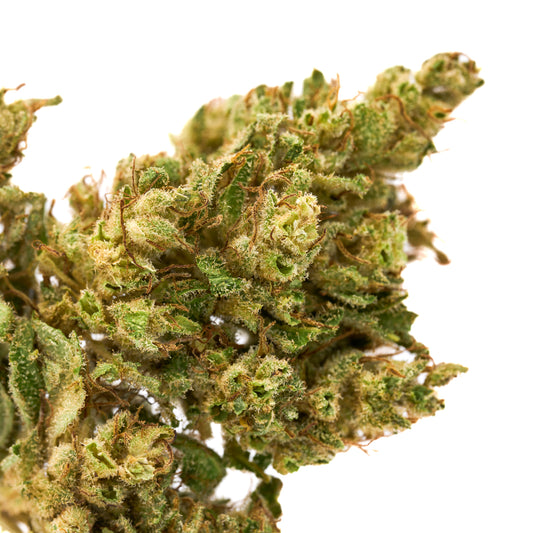
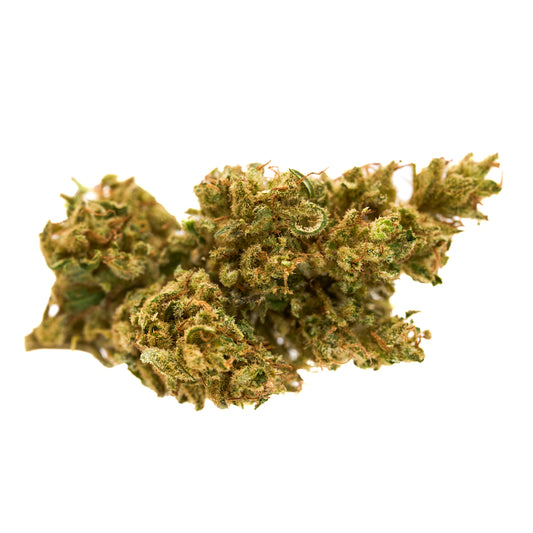
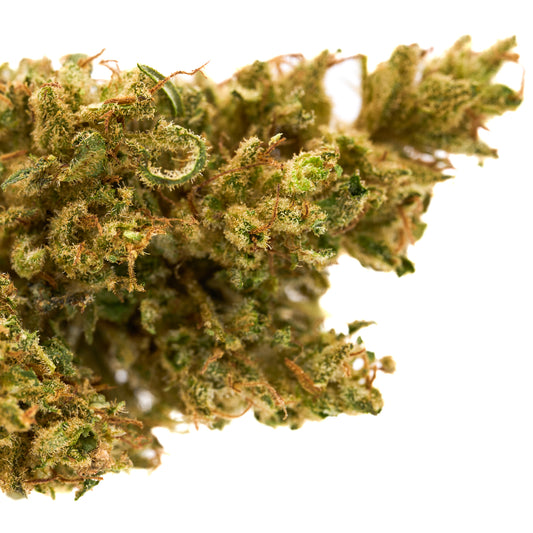
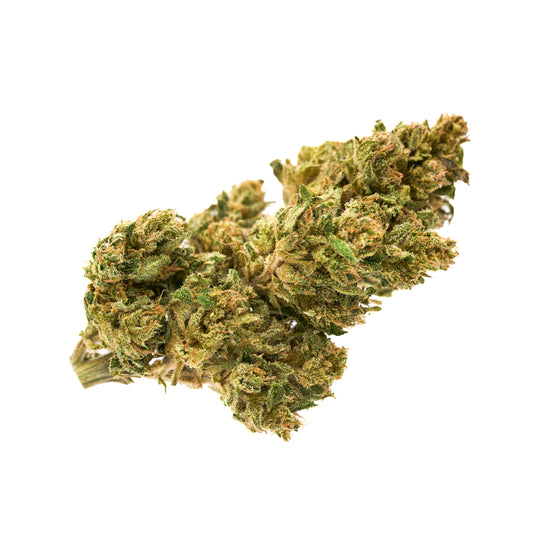
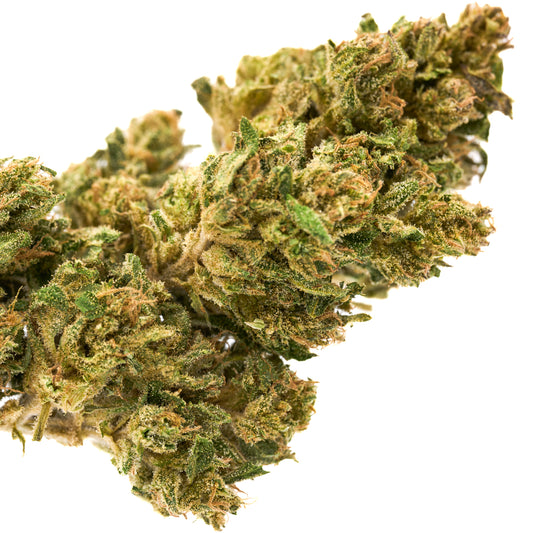


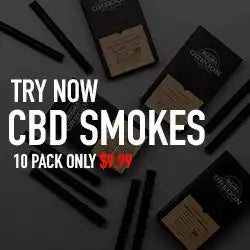
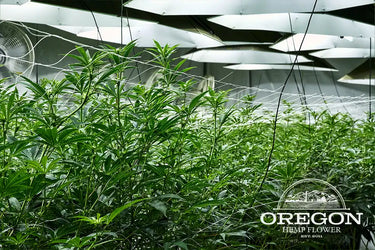

Leave a comment
Please note, comments need to be approved before they are published.